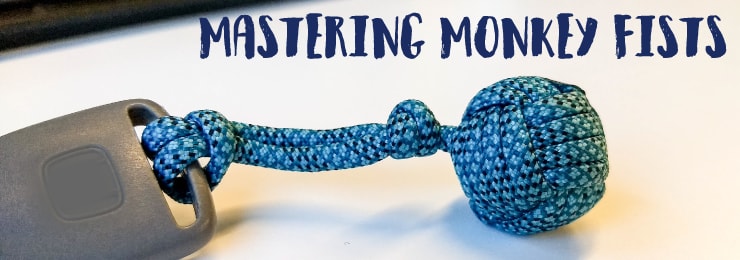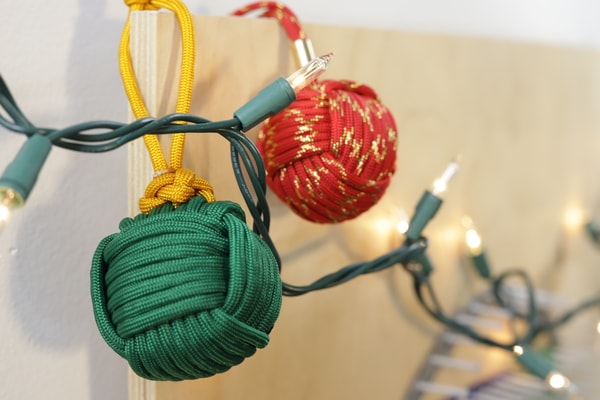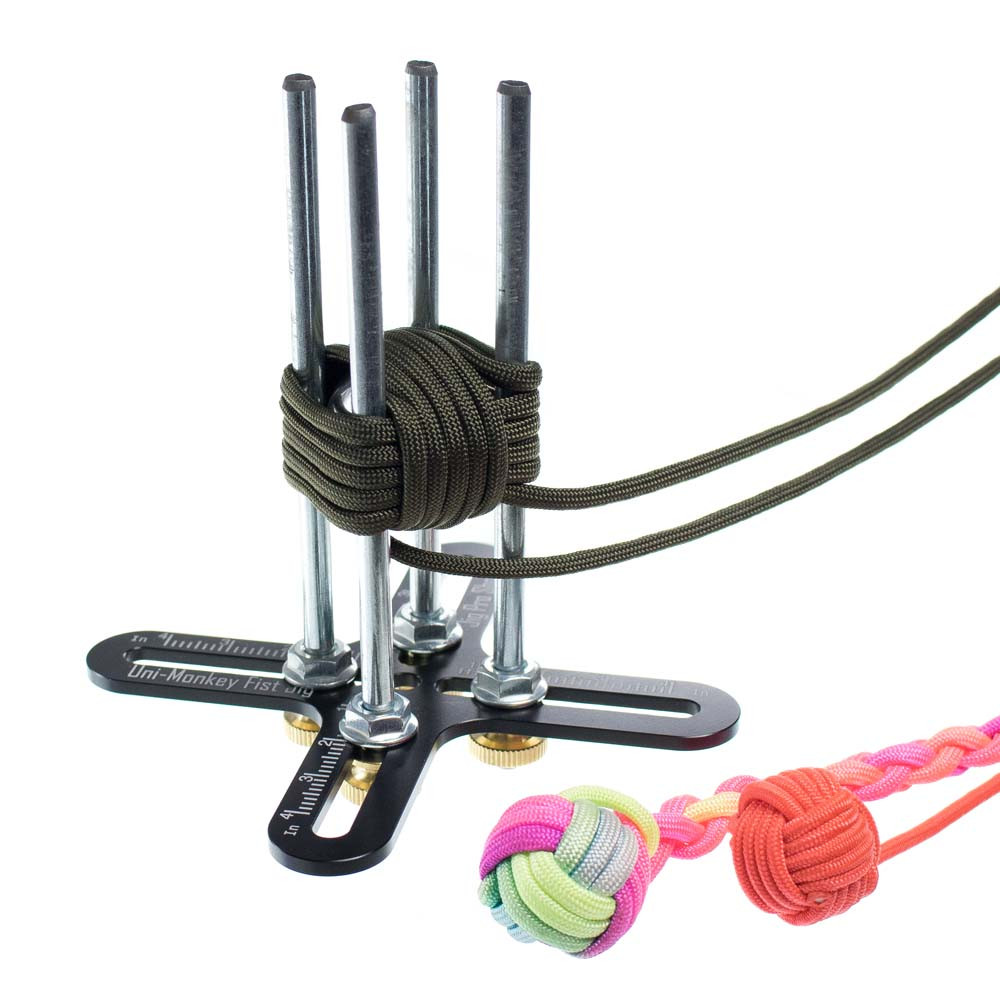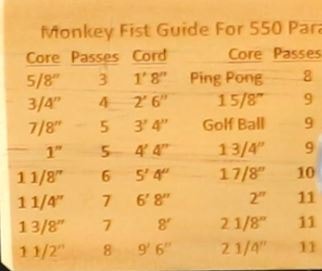How to Make a Monkey Fist Using a Jig

Monkey fists may seem like an unachievable knot to the beginner crafter, but with a little bit of practice and the right tools, they can be a relatively quick to make. It should definitely be added to any serious crafters mental encyclopedia.
I remember my first monkey fist. I was so proud of my little two-pass. I made it for use as a button on one of my earliest paracord bracelets as I didn't have any buckles laying around.
For those of you that don't know, the knot in the title image a monkey fist. It is simple in concept, but sometimes difficult in execution, especially when making one with a large number of passes. Check out this video if you have never made one before.
Sometimes my monkey fists end up like this: lopsided and squished with cords crossing over each other—a less than desirable result.
Read on for some tips on how to avoid this atrocity.

The Tools
While you can make a small monkey fist using only cord and your fingers, "jigs" allow you to make much larger monkey fists. They can also streamline the process. If you plan to make a monkey fist with more than 5 passes, I strongly recommend using a jig.

I really like the Uni-monkey Fist Jig. It's more affordable than our largest wooden jigs and it can actually make a larger fist. The feature that I like most, however, is that it can adjust to any size!
Its only downside is that it does not have a base/stand, but I found that I didn't miss the absence of that feature.
The second tool that is useful for making monkey fists is a "fid." This is basically a needle that screws onto the end of paracord. They are used in various weaving and lacing techniques. Fids allow faster construction of monkeyfist because it aids in threading paracord through small spaces. Again, this is most necessary on bigger fists.
The Technique
There are a couple of different methods to making a monkey fist. Small ones can be made on your fingers without much hassle. The bigger the monkey fist, the harder it is to make on your fingers.
The correct sizing of a monkey fist can be a little difficult to calculate. It's a good idea to use a chart for figuring out how many passes you need for different sized cores. Our Maxi-monkey jig has one printed on the base.

No matter what tools you are using to make a monkey fist, your cord can get tangled and unmanageable at times. A technique that I have found to be effective is to twist your cord as you wrap, making sure it lays flat. This makes tightening down the knot a lot easier in the end. Here's what I mean:
If you use the Uni-monky fist jig in the tools section above, I would suggest adjusting your spokes to be just barely wider than your core. This saves a lot of time and headache when tightening. You won't have to tighten as much and the cords will not have as much opportunity to overlap during the tightening process.
I am sometimes tempted to do all the tighening in one round, but I have found the greatest success by doing it in two rounds. First, size the fist down to the appropriate size. Then, on the second round, make everything tight. This keeps the loops from sliding off to one side of the core and giving your fist "bald spots."
Do you make monkey fists? If so, let us know your tips!
How to Make a Monkey Fist Using a Jig
Source: https://www.paracordplanet.com/blog/mastering-monkey-fists/